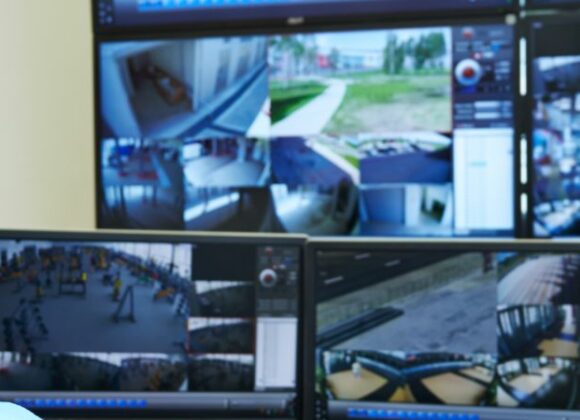Components of a security camera system you should know about before purchasing
D & S Security offers services for security camera system in Los Angeles, Glendale, Long Beach, Montebello, Pasadena, Anaheim and surrounding areas.

A security camera system is a crucial element in ensuring the safety and surveillance of various environments, including homes, businesses, and public spaces. Understanding its components is essential for effective implementation and maintenance.
Below are some components of a security camera system that you should know:
- Cameras:
The cameras are the primary components of a security camera system. They capture visual information and come in various types, such as dome cameras, bullet cameras, and PTZ (pan-tilt-zoom) cameras. High-resolution cameras provide clearer images and are essential for identifying details in surveillance footage. Infrared (IR) cameras are also common, allowing for nighttime surveillance.
- DVR/NVR (Digital Video Recorder/Network Video Recorder):
The DVR or NVR is responsible for recording and storing the video footage captured by the cameras. DVRs are used in analog camera systems, while NVRs are employed in IP camera systems. They offer features like motion detection, remote viewing, and playback, providing a centralized hub for managing and accessing recorded video data.
- Cabling and Connectors:
Proper cabling is crucial for transmitting data between cameras and the recording device. Coaxial cables are commonly used in analog systems, while Ethernet cables are prevalent in IP camera setups. Connectors like BNC (Bayonet Neill–Concelman) connectors and RJ45 connectors facilitate secure connections and ensure reliable data transmission.
- Power Supply:
Security cameras require a power source to operate. Power over Ethernet (PoE) is a common method in IP camera systems, where the same Ethernet cable used for data transmission also provides power. Analog cameras may require separate power cables, and power supplies or adapters ensure a stable power source for the entire system.
- Storage:
The recorded video footage needs to be stored for future reference and analysis. Storage devices like hard disk drives (HDDs) or solid-state drives (SSDs) are integrated into the DVR or NVR to store large amounts of data. The storage capacity should be carefully chosen based on the number of cameras, resolution, and retention period requirements.
- Monitor and Display:
A monitor or display unit is used to view live footage and playback recorded videos. It allows operators to monitor the surveillance area in real-time and review events captured by the cameras. Larger systems may incorporate multiple monitors for simultaneous viewing of different camera feeds.
Understanding these components is essential for designing, installing, and maintaining an effective security camera system tailored to specific security needs.
Kindly call us without hesitation.
